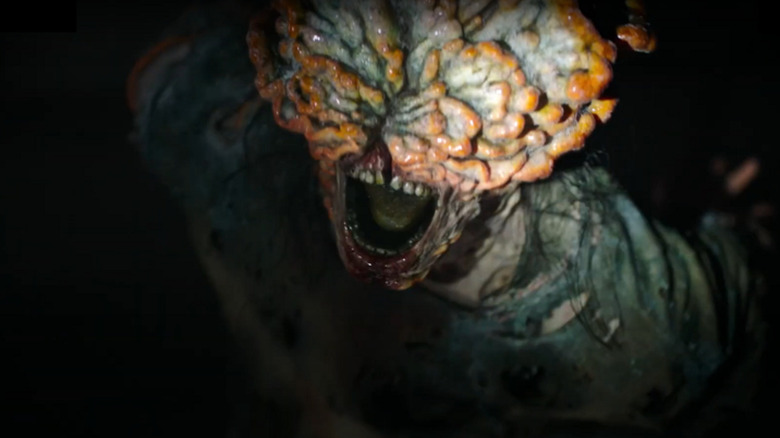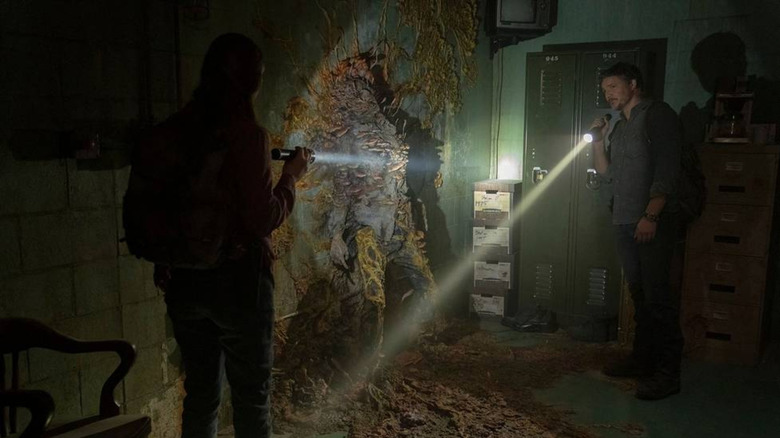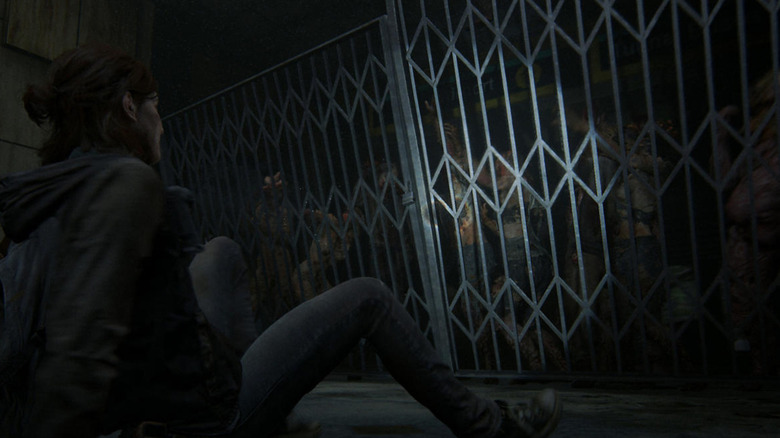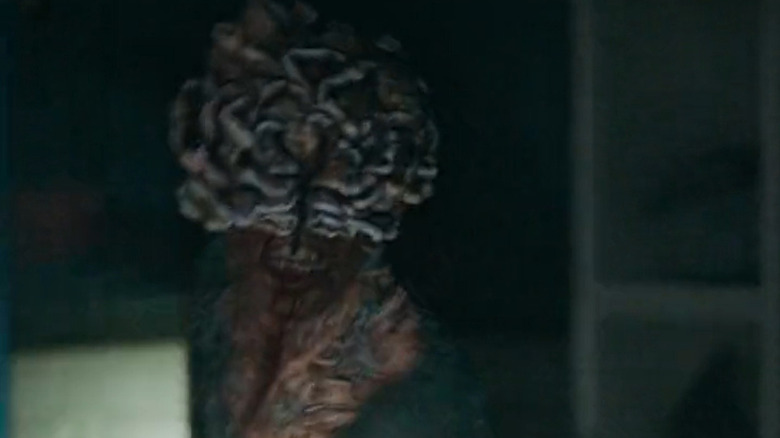The Fungal Infection In HBO's The Last Of Us Is Real (And Horrifying)
If the COVID-19 pandemic taught us anything, it's that we are woefully underprepared for any form of mass infection, and that's terrifying. The coronavirus is not a new illness by any stretch, and yet, the effects of that mutated strain ended up altering the world in ways we didn't dare think about. There's a reason why Steven Soderbergh's 2011 film "Contagion" became retroactively synonymous with the early months of the pandemic.
This isn't unlike how the fungus at the center of HBO's "The Last of Us" can actually do some pretty serious damage to those infected in real life. Cordyceps, a genus of ascomycete fungi, is mostly found in more tropical and jungle-rich climates. However, getting infected by specific strands of this fungi could theoretically result in some horrifying consequences.
A brief explanation of the Ophiocordyceps unilateralis fungus
Just to get this out of the way, there are around 400 different species of Cordyceps fungi out there, and the majority of them don't pose any risk to humans. However, the one strain that could pose a threat is a pretty terrifying one. The Ophiocordyceps unilateralis fungus was first discovered back in the 1800s and so far, only carpenter ants have been susceptible to it. In an article published in the Journal of Experimental Biology by Penn State researchers, the fungus "invades the mandibular muscles, breaks open the membrane covering the muscle fibers and forces the muscle to contract so forcefully that it wrecks the minute muscle filaments that slide past each other."
In layman's terms, the brains of these ants are not infected — rather, the muscles of the ant, particularly the ones that control mouth movement and chewing, are instructed to go against what their brain is telling them to do. This is probably even more terrifying than if the fungus did shut down its victims' brains altogether.
While the lead-up to death isn't in line with how "The Last of Us" depicts the infection, what it does after the death of its host certainly does. According to National Geographic, leftover spores from the fungus come together to build a body of sorts that emerges out of the dead ant's head. This body of spores will cause other ants to get infected, repeating the process.
Patient zero
The idea that Cordyceps could evolve into becoming a threat to humans is at the center of "The Last of Us." In a 2013 interview with Mashable, writer and co-director Neil Druckmann said that he and his team at video game company Naughty Dog did extensive research on all types of Cordyceps fungi, including the infamous Ophiocordyceps unilateralis strain. One part of this research was watching a now-inaccurate (as proven by the Penn State research) but influential episode of "Planet Earth," which showcased the evolution of an ant from infection to death.
"The more numerous a species becomes," narrated Sir David Attenborough in the episode, "the more likely it will be attacked by its nemesis, a Cordyceps fungus."
Druckmann explained to Mashable that the combination of the infection's terror and beauty was ultimately the primary inspiration for their mutation. They wanted to create a memorable type of zombie, and they used the terrifying potential of Cordyceps as the perfect way to do so. Needless to say, they succeeded.
"These infected do the things they know how to do but in a really perverted way," he said. "Some of the best horror stories always talk about 'a fate worse than death.' Nature is way scarier than anything we could ever imagine."
From the wild to the screen
The team at Naughty Dog took a few artistic liberties when creating this new strain of cordyceps for "The Last of Us." However, there are some striking similarities between this fictitious infection and the one that is all too real. For starters, the loss of bodily control is a big factor in both versions of the disease, although the Cordyceps in the video game and show attacks the brain in a way that the real Ophiocordyceps unilateralis doesn't. The physical decay of victims also differ between fiction and reality — while ants stricken with Ophiocordyceps unilateralis will grow spores on their bodies and eventually decay, they won't look nearly as gnarly as the runners, stalkers, clickers, or bloaters of "The Last of Us."
However, arguably the most important similarity between the two versions of the fungi is how their infection spreads. Much like how ophiocordyceps unilateralis exhumes spores from the deceased ant's body to sicken others in the colony, the infected in "The Last of Us" do the same, both when the host body is "alive" and when it is "dead."
The fact that "The Last of Us" relies heavily on a real-world phenomenon makes its depiction of an apocalypse much scarier than other similar stories. Of course, we shouldn't immediately panic about Cordyceps in the real world. That said, if these past few years have taught us anything, it's that we shouldn't discredit the potential for pre-existing diseases to evolve. Sleep tight, everyone!
"The Last of Us" airs Sunday nights on HBO.



